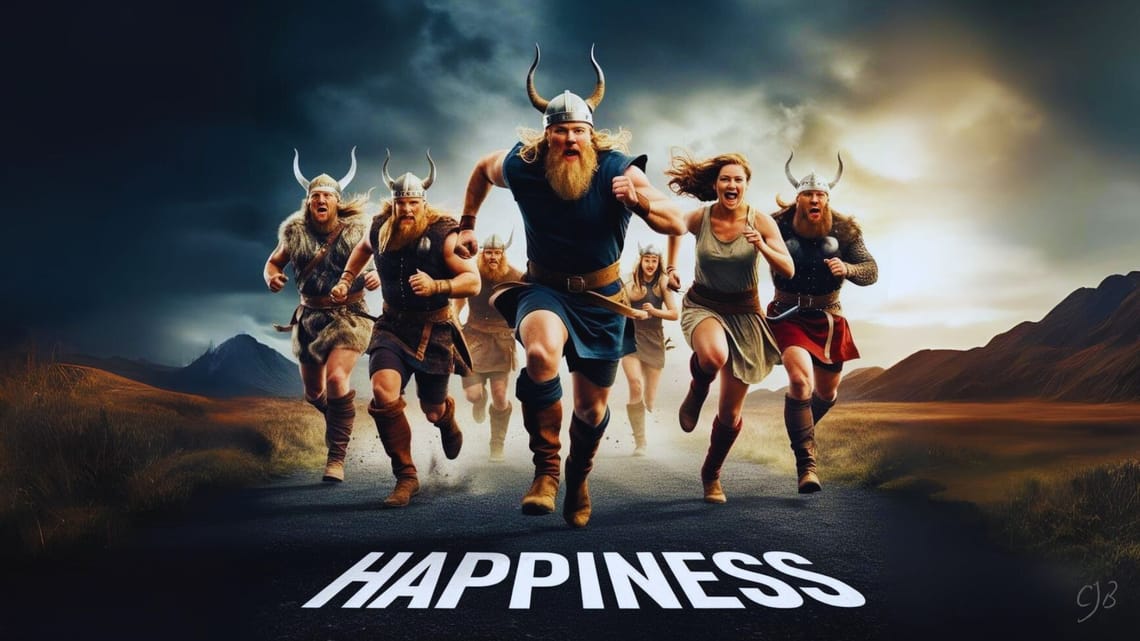
Happiness is under attack!
The Journey to Embrace Happiness as a Brand
If you've followed my journey, you may have noticed that my brand language has evolved over the last few months. With each update, I've tried to get closer to a message that's 100% authentic and reflective of what I want to bring to the world. And through trial and error, one theme has consistently emerged as the core of what I do: Happiness.
But there's a twist. As I leaned more into this theme, I discovered something disturbing—happiness, kindness, and positivity don't seem to be popular with social media algorithms. In fact, they seem to be actively suppressed. The more I focus on sharing uplifting messages, the more resistance I feel from the platforms. It's as if happiness itself is under attack.
So why, in a world that desperately needs more joy, are platforms seemingly pushing us toward negativity?
Why Happiness Matters in a World Full of Lemons
We've all heard the phrase, "When life gives you 🍋🍋🍋 lemons, make 🍹 lemonade." For me, it's more than just a motivational saying. It's a call to action, a reminder to find joy and beauty in even the most challenging circumstances. Lemons are a symbol of life’s challenges, but they also represent the opportunity to create something sweet from something sour.
As I see it, happiness isn’t a state of ignorance or denial; it’s a skill—the ability to find peace and contentment no matter what. This is the heart of what I want to bring to my followers, my readers, and my audience. But the challenge is that not everyone, especially not big social media platforms, sees happiness as "engaging" enough to promote.
Why? Because, in the world of digital media, happiness doesn’t sell as well as outrage.
The Dark Side of Algorithms: How Negative Content Gets Pushed to the Top
Let’s talk about the algorithms—the invisible forces that decide what we see every day on our screens. At its core, an algorithm is designed to show us content that will keep us engaged. But unfortunately, studies show that people are more likely to engage with content that triggers strong emotions like anger, fear, or outrage rather than joy or calm.
Think about the news. When was the last time you saw a headline about a random act of kindness or a story about someone simply being happy? It’s rare. Instead, we're flooded with pervasive stories of conflict, scandal, and fear. Social media platforms and news outlets know that negativity grabs attention, and so they cater to that.
For creators like me who are determined to spread happiness, this creates a unique challenge. Positive, uplifting content is often seen as "boring" by algorithms and, as a result, doesn’t get shown to as many people. It’s frustrating to pour heart and soul into creating content about kindness and joy, only to watch it disappear into the void because it doesn’t generate the same level of engagement as a controversy-laden post.
A Personal Example: The Case of My Autumn Walk Video
To illustrate the point, let’s look at one of my recent videos. I posted a short, peaceful clip of an autumn walk—a video meant to be a soothing, joyful experience for anyone watching. On X (formerly Twitter), it performed decently, but on YouTube, it completely bombed. In fact, two days after posting it, it had zero views.
Now, I don’t expect every video to go viral. But the fact that a simple, pleasant video about an autumn walk couldn’t get even a handful of views speaks volumes. YouTube’s algorithm likely didn’t push it out because it was perceived as “low engagement” content. It wasn’t clickbait, it wasn’t sensational, and it didn’t provoke a strong reaction.
This is just one example of how happiness-oriented content struggles to compete in a landscape where negativity is king.
Why Platforms Are Reluctant to Embrace Happiness
You might wonder, why wouldn’t platforms want to spread positivity? After all, wouldn’t a happier audience be better for society as a whole?
The answer is complex, but it boils down to this: negativity is profitable. When people are anxious, outraged, or fearful, they’re more likely to stay online, click on ads, and engage with posts. This engagement translates into revenue for platforms. And so, negativity becomes not just a byproduct of social media but an integral part of its business model.
Ironically, many of these platforms pride themselves on being “woke” and pushing for social change. But there’s a contradiction here. On one hand, they promote causes like mental health and social justice. On the other hand, they fuel negativity and outrage because it boosts engagement. It’s a cycle that’s difficult to break, especially when there’s so much profit on the line.
The Real-World Impact: How the Negativity Bias Affects Us All
The constant bombardment of negative content has real effects on our mental health. People become conditioned to view the world through a lens of fear and anger. It’s easy to feel helpless, hopeless, or cynical when all you see are problems and conflicts.
For someone like me, who wants to promote happiness, this creates a huge dilemma. It’s not just about growing a following; it’s about the impact I want to have on people’s lives. If I allow myself to be influenced by the negativity bias of social media, I risk cheapening my message and compromising my values.
And I’m not alone. Many creators feel pressured to conform to the algorithm, to post controversial or polarizing content just to get noticed. It’s a slippery slope, and once you start down that path, it’s hard to go back.
Staying True to My Mission: Embracing Happiness Despite the Odds
Despite the challenges, I’m committed to staying true to my mission. Happiness, kindness, and love aren’t just buzzwords for me; they’re the core values that drive everything I do. I believe that these values are worth fighting for, even if it means that my content doesn’t reach as many people as quickly as I’d like.
I understand that my choice to focus on happiness may mean slower growth on platforms that reward negativity. But to me, that’s a trade-off I’m willing to make. At the end of the day, I’d rather have a smaller community of people who genuinely resonate with my message than a large following built on sensationalism and drama.
How You Can Help: Choosing Happiness in Your Daily Life
So, what can you do to help shift the balance toward positivity? It starts with awareness. Recognize that the content you’re being shown is carefully curated to keep you engaged—and that often means it’s biased toward negativity.
Take control of your media consumption. Seek out creators and platforms that uplift you. Support content that makes you feel good, that inspires you, and that aligns with your values. By doing this, you send a message to the algorithms: happiness matters.
The Happy Ending: Why Kindness and Love Will Ultimately Prevail
While it’s easy to feel discouraged, I truly believe that happiness will ultimately prevail. Nothing can ever beat kindness and love. They are timeless, universal values that will always find a way to shine through, no matter how much negativity tries to drown them out.
Platforms and algorithms may shape what we see, but they can’t change what we value as individuals. Together, we have the power to shape a new narrative—one where happiness, peace, and love are celebrated rather than suppressed.
Thank you for being part of this journey with me. Let’s keep pushing for a world where happiness isn’t just an afterthought but a priority. Let’s choose to focus on the good, to spread positivity, and to make the digital space a little brighter every day.
A Final Word: Join Me in Spreading Happiness
If this message resonates with you, consider joining me on this mission. You can click the button below to follow me, like and chat about this post on X. Or you can subscribe to me on YouTube, or forget me, you can also share a kind word with someone else today. Together, we can make happiness something worth fighting for.









































































































































































































































































































































































